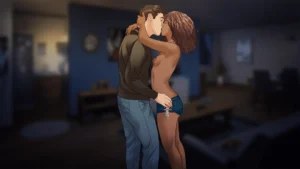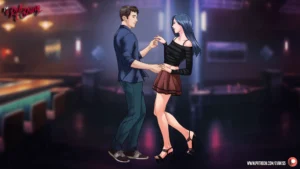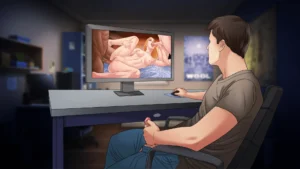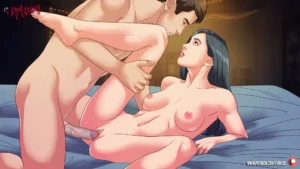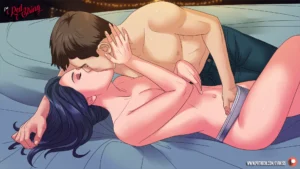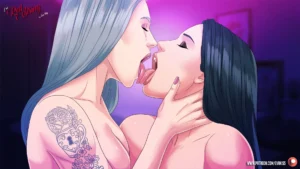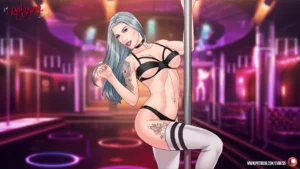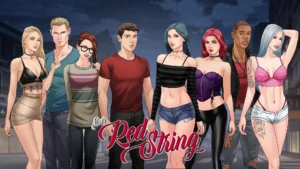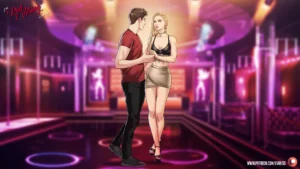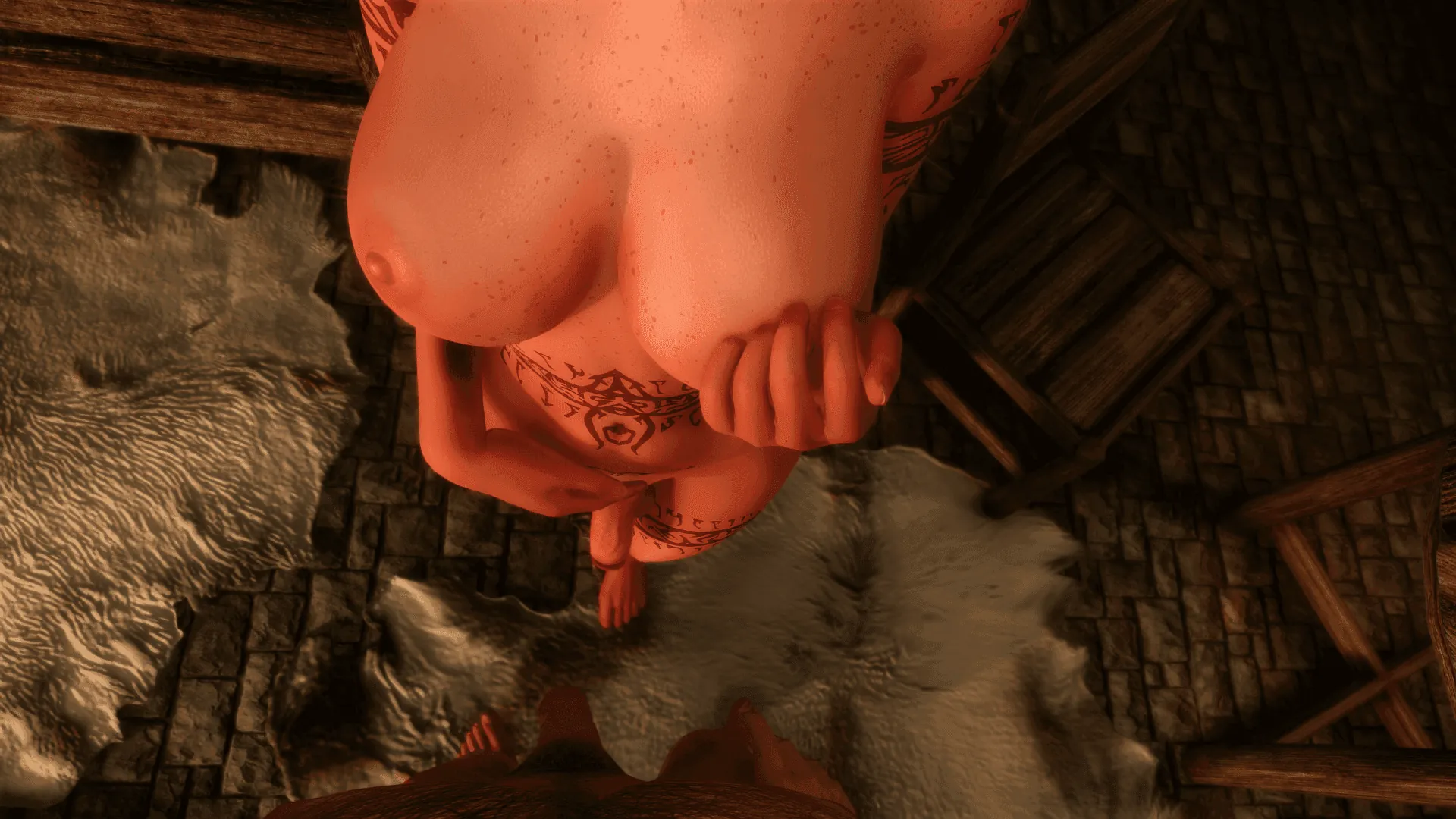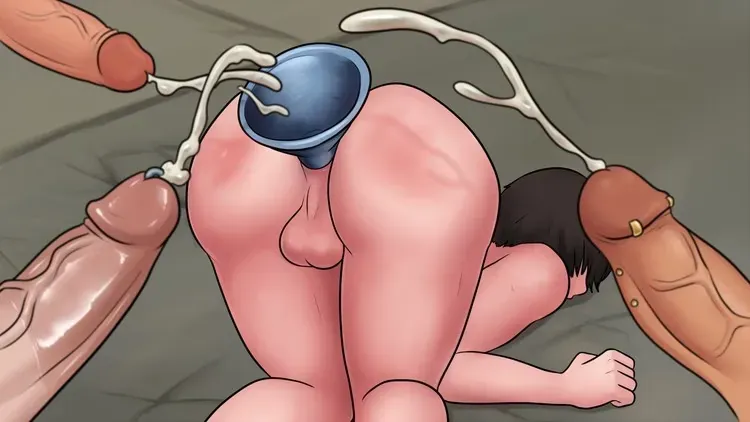
Our Red String
Play Our Red String
Our Red String review
A Deep Dive into the Interactive Storytelling of ‘Our Red String’
In the realm of interactive storytelling, ‘Our Red String’ stands out for its complex narrative and player-driven choices. This adult visual novel offers a unique blend of branching storylines and high-stakes decisions, making it a compelling experience for fans of the genre. With its focus on interwoven cause and effect, ‘Our Red String’ challenges players to navigate a world where every choice has a consequence.
Chapter 1: Gameplay and Storytelling
What Makes ‘Our Red String’ Unique? 🎭
Let’s be honest, a lot of games in the visual novel space can feel pretty similar. You click, you read, you pick an obvious “good” or “bad” dialogue option, and the story chugs along a fairly predictable track. I’ve played dozens where my presence felt more like that of a spectator than a true participant. But then I started my first playthrough of Our Red String, and my entire perspective on interactive storytelling shifted. This isn’t just a story you witness; it’s a world you shape with every single decision.
The most immediate and brilliant differentiator is its dual-protagonist system. You don’t just guide one character; you control the fates of both Lena and Ian, two very different people navigating life, love, and ambition in a bustling city. One moment you’re making a choice as Lena, a struggling musician trying to stay true to her art, and the next, you’re in Ian’s head, a photographer wrestling with his past. This constant flip in perspective is genius. It forces you to consider both sides of every interaction and relationship, creating a rich, multifaceted narrative tapestry. The Our Red String gameplay is built on this foundation of duality, making you the architect of not one, but two interconnected lives.
What truly sets it apart, however, is the sheer weight of its player-driven choices. We’re not talking about simple “be nice/be rude” binaries. The game presents you with nuanced, morally grey decisions that lack a clear “right” answer. Do you encourage Lena to compromise her song for a shot at a record deal, or stick to her principles and risk financial ruin? Do you guide Ian to confront a toxic family member or advise him to maintain a fragile peace? These aren’t just plot points; they are character-defining moments that resonate throughout the entire experience. This depth is what creates such profound emotional investment; you care because you are directly responsible for their happiness, their heartbreak, and their destiny.
Navigating Branching Storylines 🧭
If you think of a typical story as a straight road with a few scenic detours, Our Red String is an entire, sprawling subway map. The branching storylines are so extensive and interwoven that your first playthrough feels uniquely yours. I remember on my initial run, I was so focused on getting Lena and Ian together that I made choices I thought were “romantic.” This led to a specific, sweet ending that felt satisfying. Curious, I immediately started a new game.
On this second attempt, I decided to have both characters prioritize their careers over their budding relationship. The result was staggering. Entire characters and subplots I never encountered the first time suddenly appeared. Lena crossed paths with a rival artist who became a major figure in her arc, and Ian landed a career-defining job opportunity that was completely absent before. The game didn’t just change the ending; it altered the very journey, introducing new locations, conflicts, and supporting characters based on my early, seemingly innocuous decisions.
Tip: Don’t try to “game” the system on your first play. Embrace your instincts. The real magic of Our Red String is in the surprises, and you can only be surprised once!
Here’s a simple example of how a single early choice can send ripples through the narrative:
| Your Choice as Lena | Potential Long-Term Story Branch |
|---|---|
| Accept a last-minute gig at a dive bar. | Leads to meeting a influential music producer who becomes a key figure, opening up storylines about fame and commercial success. |
| Turn down the gig to finish writing a song. | Leads to a deeper connection with a fellow artist in her apartment building, fostering a subplot about collaboration and artistic integrity. |
This level of narrative complexity is what gives the game its incredible replay value. It’s not about seeing a slightly different ending card; it’s about experiencing a fundamentally different story each time. You’re not just navigating branches; you’re growing an entirely new tree.
The Impact of Player Choices 💥
This is where the Our Red String gameplay truly becomes art. The consequences of your actions are rarely immediate, which makes them feel more authentic and impactful. A small white lie you tell in Chapter 2 might resurface in Chapter 10 to devastating effect. A moment of kindness shown to a secondary character could unlock a crucial helping hand when your main character is at their lowest point. The game has a long memory, and it masterfully weaves your past decisions into the fabric of its present narrative.
Let me share a personal anecdote that solidified my love for this system. In one playthrough, I had Ian choose to be brutally honest with Lena about a song she’d written, criticizing its lack of originality. I thought I was being “helpful.” The game didn’t punish me with a simple relationship meter drop. Instead, Lena internalized that criticism. It altered her behavior for the next several chapters, making her withdrawn and insecure in her interactions with Ian. It changed the entire emotional tone of their relationship, and it took multiple thoughtful choices later on to even begin to repair the damage. I felt that. I felt guilty. That’s the power of player-driven choices that have tangible, emotional consequences.
The game excels at making you complicit in the outcomes. When things go well, you feel a genuine sense of pride. When they fall apart, you feel the sting of responsibility. This is the core of its interactive storytelling—it removes the safety net. You can’t simply reload a save file to get a “better” outcome without fundamentally changing the story you’re telling. You have to live with your decisions, just like in real life.
Ultimately, the Our Red String experience is a testament to the power of giving players genuine agency. It’s a visual novel that understands its medium is not just about telling a story, but about building a relationship between the player and the characters. Every choice is a conversation, every branch a new possibility, and every playthrough a unique testament to the paths you were brave enough, or foolish enough, to take.
In conclusion, ‘Our Red String’ offers a captivating experience through its intricate storytelling and player-driven narrative. By exploring the complexities of choice and consequence, players can delve into a rich world that challenges and rewards them. Whether you’re a fan of visual novels or just looking for a unique gaming experience, ‘Our Red String’ is definitely worth exploring.




